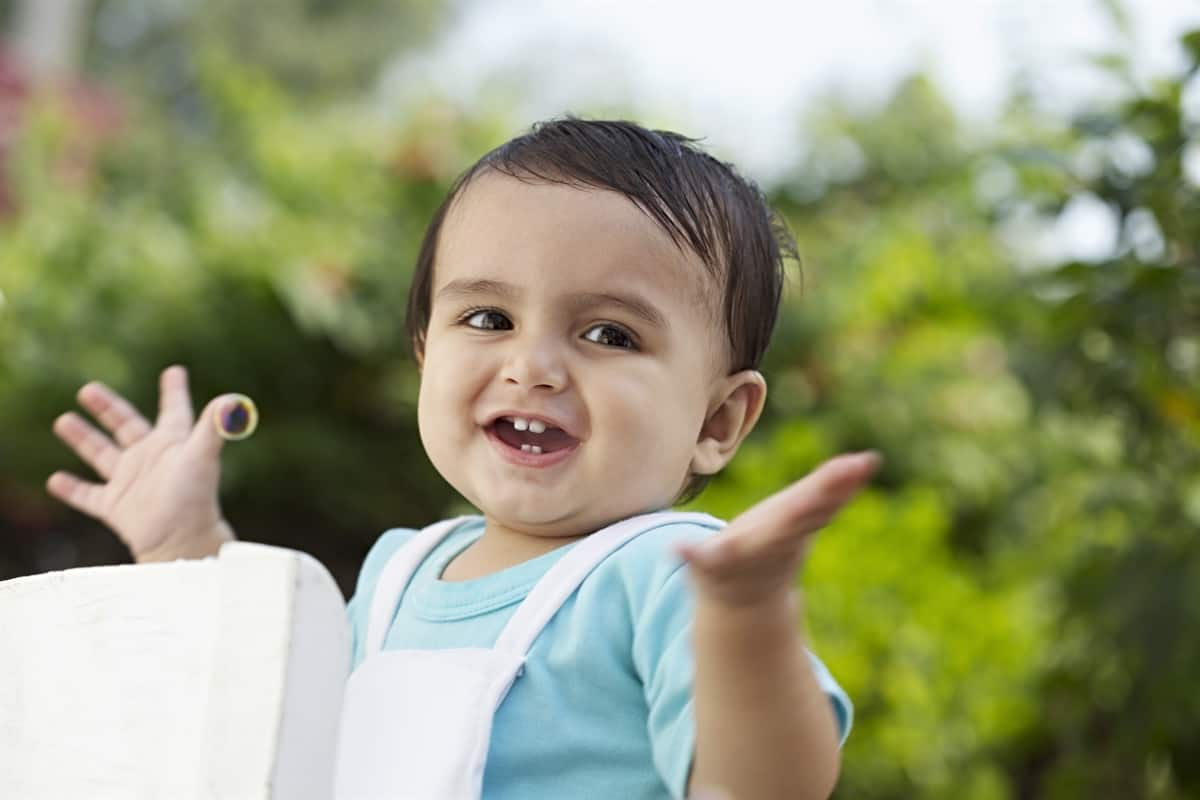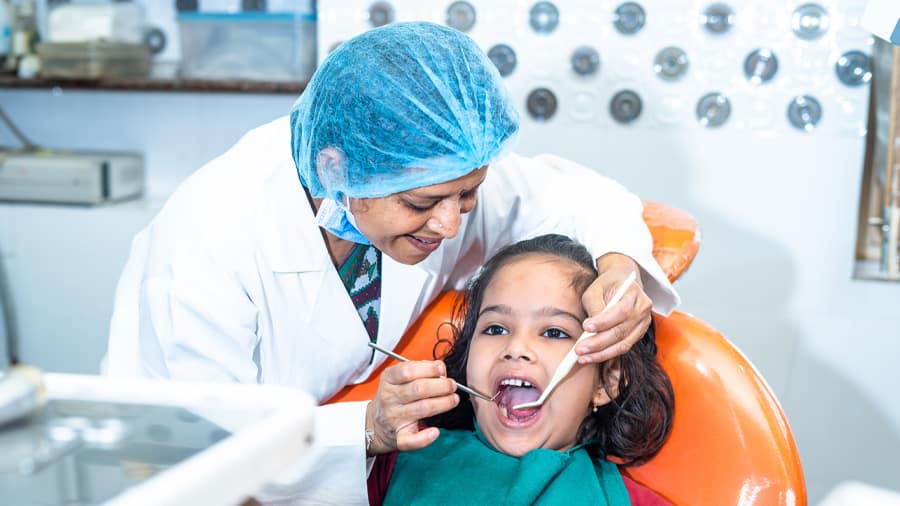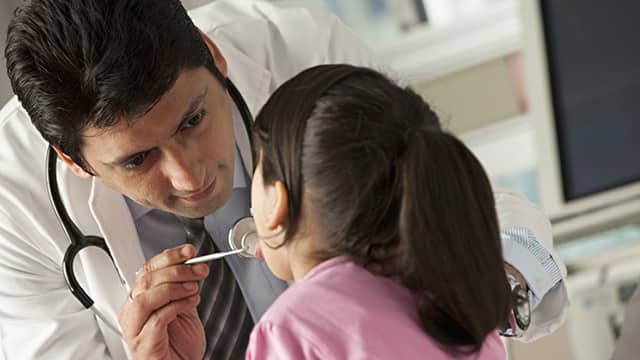What Are Milk Teeth?
Milk teeth, commonly referred to as baby teeth, primary teeth, or deciduous teeth, are the first set of teeth that develop in children. While the exact timing for tooth development may vary from child to child, it usually happens around six months of age. The milk teeth help the adult teeth to erupt in their correct positions, as the permanent teeth usually erupt beneath the roots of the milk teeth.
General Timeline For Milk Tooth Development
The development of milk teeth generally follows a typical timeline, though the exact timing can differ for individual children. Each child's growth is unique, including how their teeth come in. Here’s a breakdown of the average timeline for the eruption of milk teeth:
Lower Teeth
Central Incisors: These are usually the first to appear among the front teeth, typically emerging between 6 and 10 months.
Lateral Incisors: The lateral incisors usually come between 10 and 16 months following the central incisors.
First Molars: The first set of molars appears next, generally between 14-28 months.
Canines: Canines, or cuspids, typically erupt between 17 and 23 months.
Second Molars: The second molars are the last of the lower teeth to emerge, usually appearing between 23 and 31 months.
Upper Teeth
Central Incisors: Upper incisors usually erupt between 8 and 12 months.
Lateral Incisors: These teeth come next, typically between 9 and 13 months.
First Molars: The upper first molars generally appear between 13 and 19 months.
Canines: Similar to the lower teeth, the upper canine teeth typically come between 17 and 23 months.
Second Molars: The upper second molars are usually the last to erupt between 25 and 33 months.
By age 3, the milk teeth number reaches 20, meaning all of your child’s baby teeth will be present. Dentists often use the milk teeth formula to describe the arrangement of the teeth. The formula is 2102/2102, indicating that each quadrant of the mouth contains two incisors, one canine, zero premolars, and two molars.
If you are looking for ways to care for your child's milk teeth, consider using Colgate Toothpaste for Kids (0–2 years). This toothpaste is 50% less abrasive than standard adult fluoride toothpaste, making it safe for your baby’s delicate tooth enamel. It effectively cleans their teeth while protecting against cavities, plaque, and bad breath. Plus, it contains no artificial flavours, colours, sweeteners, or preservatives, making it a great choice for your child's oral hygiene routine.
Choose our kid's toothpaste to ensure ultimate protection for your child's milk teeth!
The Importance of Milk Teeth
Although milk teeth are temporary, they are extremely important for your child’s overall development. Understanding the difference between milk teeth and permanent teeth highlights why these temporary teeth play such a crucial role. Here are a few reasons why they matter:
They help your child chew food properly, ensuring they get the nutrition they need.
They play a key role in speech development, helping your child form sounds and words clearly.
They act as placeholders for permanent teeth, ensuring that the adult teeth emerge in the correct position.
When baby teeth are extensively decayed or injured, the permanent tooth underneath can become infected or damaged. Suppose baby teeth must be removed due to caries or injury. In that case, other teeth can drift into the space and block the permanent tooth from coming in. This misalignment can negatively impact the gum line and lead to future dental problems, further emphasising the importance of caring for your child’s milk teeth.
When do Milk Teeth Fall Out?
Losing the first tooth is often an exciting milestone for children, especially with the added magic of the tooth fairy tradition. Many place the lost tooth under the child’s pillow for the tooth fairy to exchange for a small gift, making the experience fun for your child.
Milk teeth typically start falling out around the age of six or seven, with the front teeth being the first to go. This process usually continues until about age 12, when most children have lost all of their milk teeth. However, the timeline can vary from child to child. If a tooth falls out prematurely due to dental care issues, such as caries, or remains longer than expected, it’s a good idea to consult a dental professional to get the right advice.
How to Care For Milk Teeth?
According to the Indian Dental Association, starting healthy oral hygiene habits early is key to keeping milk teeth healthy and cavity-free. Caring for your child’s milk teeth is essential for their long-term oral health. Follow these steps to ensure your child’s teeth stay in good shape:
Start early: Before the first tooth appears, gently clean your baby’s gums with a wet gauze pad after feeding. Once the first tooth emerges, switch to a soft, damp cloth or an infant toothbrush for cleaning.
Brushing routine: Brush your child’s milk teeth twice a day with a small, soft toothbrush and fluoride toothpaste. Be aware that your child may need your help with brushing and flossing until they are about seven or eight years of age, as they might not be able to do it thoroughly on their own.
Diet matters: Limit sugary snacks and drinks that can cause tooth decay, and encourage water consumption, especially after meals, to help rinse away food particles.
Regular checkups: Schedule your child’s first dental visit by their first birthday, and continue with regular checkups every six months to maintain dental health.
How to Help Your Child During Teething?
Teething can be a difficult time for both children and parents. Here are some ways to help ease your child’s discomfort:
Teething toys: Offer your child a soft, rubber teething ring to chew on. Chilled (but not frozen) teething rings can be especially soothing.
Cold washcloth: A cold, damp washcloth can help soothe sore gums. Let your child chew on it for relief.
Teething gels: Some parents opt for teething gels that contain a mild numbing agent. However, it’s best to consult your paediatrician or dentist before using these products.
Massage the gums: Gently massaging your child’s gums with a clean finger can also provide relief.
When to See a Dental Professional?
You should see a dentist if your child’s milk teeth are delayed, showing signs of decay, or causing pain. Early loss of a tooth or a tooth that doesn’t fall out when expected also requires attention. Alignment issues in the lower jaw and crowded or crooked teeth should also be evaluated to prevent future complications. Scheduling regular checkups every six months will help ensure healthy dental development for your child.
To conclude, caring for your child’s milk teeth is important for their overall health and development. Following good oral hygiene practices and staying informed about their dental milestones can help ensure healthy teeth and smiles as they grow. Additionally, get timely professional advice to prevent potential dental issues that may arise over time. With the right care, your child’s dental health will be in great shape for the future.
Frequently Asked Questions
How many milk teeth does a child have?
A child typically has 20 milk teeth. They usually start to erupt by six months and will have the full set of 20 teeth by age 3.
What should I do if my child’s milk teeth have cavities?
If your child’s milk teeth have cavities, visit a dentist for early treatment to prevent further decay and protect the developing permanent teeth.
What should I do if my child’s milk tooth doesn’t fall out on time?
If your child’s milk tooth doesn’t fall out on time, it is recommended to consult a dental professional to diagnose the situation and to ensure proper dentition.
When should my child first visit the dentist?
It is recommended to schedule your child’s first dental visit by their first birthday or within six months of the appearance of their first tooth. The initial dental visit may take about 30 to 45 minutes.
This article is intended to promote understanding of and knowledge about general oral health topics. It is not intended to be a substitute for professional advice, diagnosis or treatment. Always seek the advice of your dentist or other qualified healthcare provider with any questions you may have regarding a medical condition or treatment.
ORAL HEALTH QUIZ
What's behind your smile?
Take our Oral Health assessment to get the most from your oral care routine
ORAL HEALTH QUIZ
What's behind your smile?
Take our Oral Health assessment to get the most from your oral care routine












